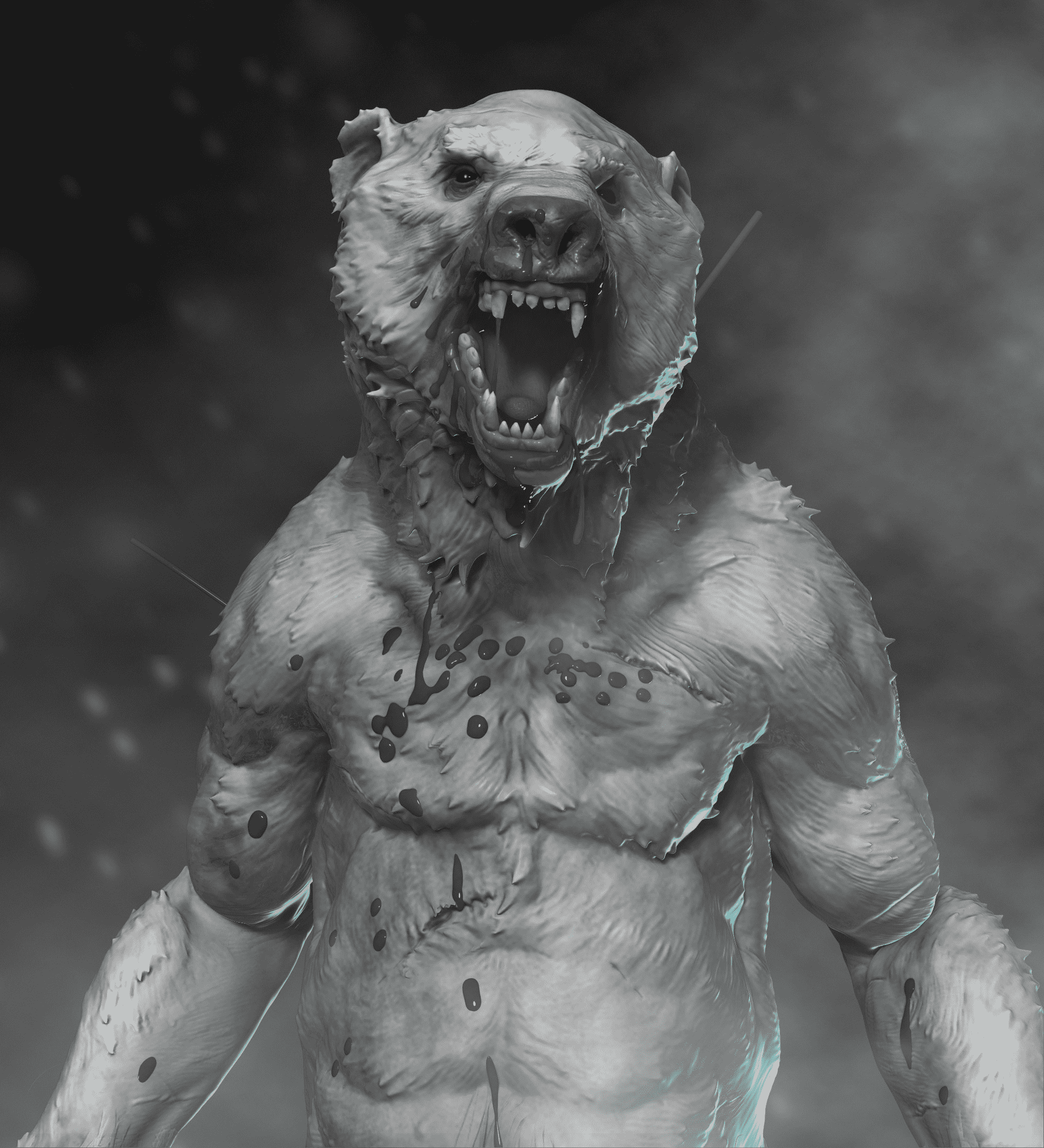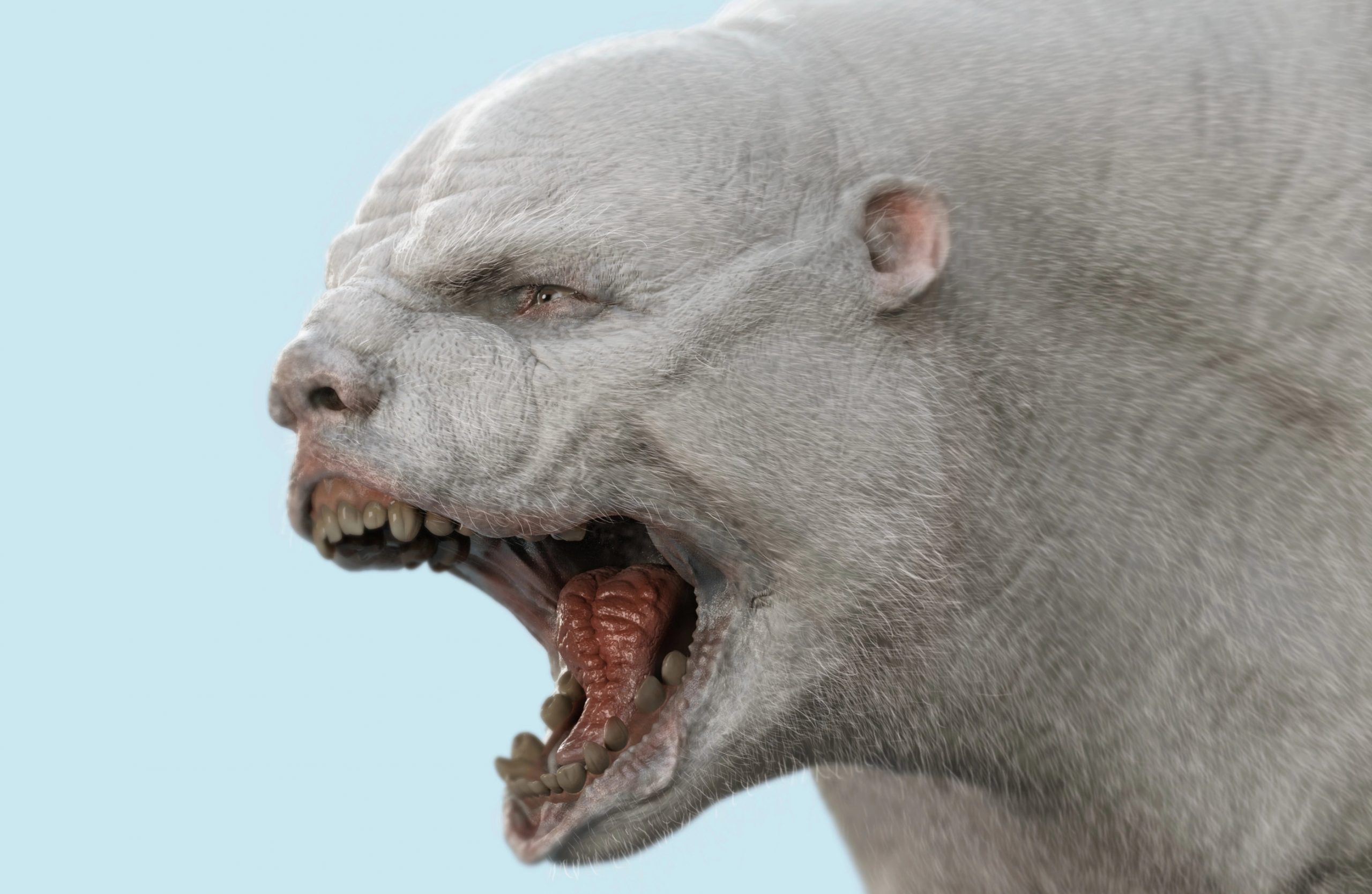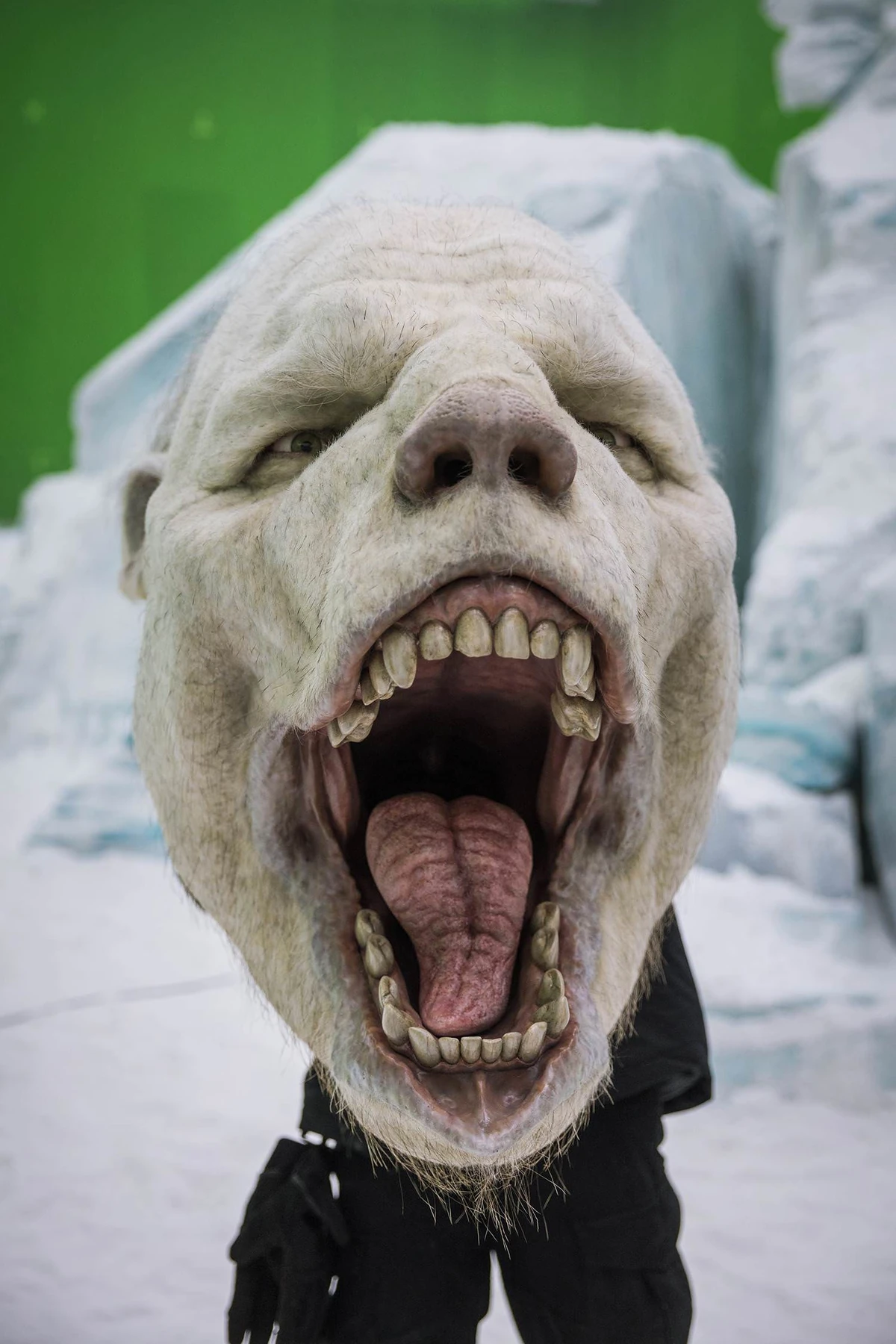What appears to be white and fluffy on the exterior but will kill you if it notices you? Polar bears, to be precise. While these creatures may appear to be enormous cuddly toys, their predatory behavior tells a different story. If I may say so myself, the monster we are looking at in this video is a polar bear on steroids (wait for impact) plus a complete cocktail of other medicines.
The Tuunbaq is the main creature featured in the 10-episode first season of the 2018 horror anthology series The Terror. The show is gothic survival horror at its finest, as it follows the members of a Royal Naval expedition entrusted with discovering the famous but perilous Northwest Passage. The expedition, however, turned south when they were attacked by nature, leaving them stranded and struggling for survival. If it was not horrible enough, the Tuunbaq makes an appearance.
This creature will undoubtedly astonish horror aficionados.
Is it based on a true story

Survival horror is not a new genre by any means, horror aficionados know of survival horror movies of groups surviving in caves and run-down mines and so on. However, if the film or series is said to be based on a true story, it adds an additional layer of fear to the entire viewing experience.
The series is based on Dan Simmons’ novel of the same name from 2007, which forms the foundation for the first season. The storyline of The Terror is centered around a mid-nineteenth-century expedition to the Arctic headed by two men – Captain Sir John Franklin and Francis Crozier on the two ships, the Erebus and the Terror, which had set out on the disastrous voyage in 1845. The real story that The Terror is based on, has piqued the interest of audiences since its release.
While the series contains a lot of fiction, it also contains a lot of facts and scarily enough, the hardships shown in the series did in fact take place. As per the South China Morning Post, Franklin’s third and last voyage to the Northwest Passage did take place, and it comprised of two vessels named Terror and Erebus. The voyage was headed by Franklin aboard the Erebus, with Irishman Francis Crozier as the second in command, and the two boats set out from the United Kingdom in the year 1845. The 129 men on board never returned, and the boats were last seen north of Baffin Island entering the Northwest Passage.
The series’ premise that the ships were stuck in ice was truly accurate. The British dispatched three ships to find Franklin because of the mysterious nature of the disappearance of two boats carrying over a hundred men. On Scotsman John Rae’s third trip to the region, as he was trying to unravel this mystery in 1854, he gathered valuable intelligence from indigenous Inuit tribes that gave some sort of an explanation of what had transpired.
He learned that both vessels became icebound off King William Island, at the mercy of mother nature, and were finally crushed and drowned, according to the report. The surviving crew then traveled south on foot in search of food, shelter, and, safety. However, they, unfortunately, died along the route. Franklin was reported to have perished on board Erebus in 1847 before they set off by foot, according to a note that was discovered later.
A Tunnbaq, the mystic polar bear-like creature who threatens their lives in the series is the creature we are featuring today. However, we can more or less confirm that it does not exist in real life. Other missions, on the other hand, have shown the likelihood of deadly polar bear attacks, which probably served as inspiration for the creature.
The series also depicted an Inuit lady being hauled onboard and interrogated about the Tunnbaq, although there is no way to know if this at all occurred during Franklin’s mission, Innuit communities exist in the region. They had lived in the Northwest Passage for generations, millennia before Europe even considered it as a place worth exploring, and they were frequently welcomed aboard and traded with.
Thus, there is a lot of truth to the story that is depicted however, the existence of a monstrous, demonic polar bear, though sensational and makes for a terrific horror antagonist, is almost certainly not an actual fact. Fortunately, or unfortunately.
Why is Tuunbaq so intimidating!

For the first four episodes in the series, we don’t see the Tuunbaq in the flesh however, that does not mean that its presence was not felt. The crew is stalked, haunted, and terrorized by an unnamed and unidentified entity that tested their sanity. It is an uncanny monster with the body of a muscular polar bear, multiple times larger than a regular one, and human-like hands and eyes.
A Netsilik Hunter first mentions the Tuunbaq while discussing with Sir James Clark Ross and his translator who had come to the region to make sense of Sir John Franklin’s expedition’s tragedy. The hunter describes how the Tuunbaq was always after members of the excursion and how it originated “with the shamans.” To the two men’s surprise, the hunter describes the beast as “the thing that eats on two legs and four” and “the thing built of muscles and spells.”
It’s an invention of Dan Simmons, the novel’s author, and it’s perhaps based on the Inuit mythology of the Tupilaq, a malevolent spirit who takes both human and animal forms. The Tupilaq was made from animal or human remnants and sent forth to murder a target; however, if it was beaten, it would come back to its creator and attempt to kill them instead.
The Tuunbaq initially makes an appearance when it ruins some boats carrying provisions for a sled party from HMS Erebus and this first appearance makes one hell of an impression. The Tuunbaq arrives and kills Lieutenant Graham Gore, the party’s leader, after the Tuunbaq’s shaman is shot and subsequently killed by the party’s marine David Bryant. It was clear that the death of his shaman had affected him greatly and that he would not take any prisoners from then on.
The Tuunbaq eventually begins striking the ships themselves after avoiding a trap prepared for it and killing the men who set the trap. It assassinates William Strong and Thomas Evans individually, ripping them into two parts, and then joins their halves on the deck. This was a clear sign that it did not like these foreigners and did not appreciate their presence on the island. Moreover, it showed exactly how powerful the Tuunbaq was physical.
The Tuunbaq keeps attacking the ships, killing HMS Terror crew member Thomas Darlington. It then goes after another crew member, Thomas Blanky, chasing him up the mast and battering his leg before being lit on fire by a lantern and taken down by a cannon. It retreats back into the ice after being wounded and does not assault the ships again.
After allowing the group to be in peace for a while, the Tuunbaq attacks Terror Camp again, slaughtering a huge number of crew members, including Richard Wall, Henry Foster Collins, James Reid, Francis Pocock, and Thomas Honey. It turns out that the Tuunbaq was provoked by the massacre of an Inuit family. A majority of the beast’s actions came from a place of feeling protective of its land and people.
Even when it was visibly emaciated, skin riddled with scabs and scars, and limps, it was vicious. Hickey, a crew member, drags his boat out onto the plain with the mutineers and his prisoners and then begins singing to draw out the Tuunbaq. The other mutineers plan to destroy it, but Tozer’s attempt to organize them fails due to internal squabbling, and the Tuunbaq slaughters William Pilkington, John Diggle, George Henry Hodgson, Robert Golding, Magnus Manson, and Tozer, eating a chain and accidentally attaching itself to the boat and Captain Crozier.
Hickey severs his tongue and presents it to the Tuunbaq in a ritualistic effort to control it, but the creature rejects him, chews off his arm, and shreds him in half. It is only after multiple brutally targeted attacks using everything from pitchforks to forks, guns, makeshift rockets, and finally, strangling via a chain that took down this beast.
All of these examples of the Tunbaq absolutely massacring large numbers of people goes on to show exactly why the crew was terrified of it and showcases the immense power that this beast possessed and did not hesitate to use. A truly terrifying creature.
The Tuunbaq also has quite the backstory attached to it which is revealed towards the 2007 novel’s conclusion and gives us more insight into its existence. It was created by Sedna, the Sea Spirit, to kill the Spirits of the Air and the Moon, and as a result, it was able to traverse between the spirit and physical worlds. In a 10,000-year battle against the Tuunbaq, the Spirit of the Air and the Spirit of Consciousness join forces. After being beaten, the Tuunbaq tries to destroy its creator, the Spirit of the Sea, but she uses a built-in flaw to send it to the physical realm. The Tuunbaq, who takes the form of a massive polar bear, has spent millennia seeking and consuming the souls of the Inuit.
The violence persisted until the shamans created a new race of extremely clairvoyant people, the sixam ieau, who provided sustenance to the Tuunbaq and promised it that no human would intrude on its area as long as it did not wander south into the territories of men. The expedition had essentially encroached upon its territory, leading it to retaliate.
Although in the novel, the Tuunbaq is indestructible because it is a spirit, in the show it dies at the hands of man, but not before massacring almost all of them.
How the Tuunbaq was created!

Concept designer Neville Page, who also developed creatures for Cloverfield, Avatar, and the Star Trek movies and TV series, devised the appearance of the Tuunbaq on the program. The visual effects team then took this concept and turned it into a fully realized, three-dimensional, and empathetic beast. Concept designer Neville Page remarked that showrunners David Kajganich and Soo Hugh were quite particular about their idea. It had to be a bear with human characteristics. It was difficult for him apparently, to hit this goal without it becoming a caricature or a children’s drawing of something bizarre.
This entailed flipping Page’s regular workflow on its head. In most cases, he sketches several distinct designs and then presents them for approval, but on this occasion, he collaborated with the showrunners in much smaller phases. This made the whole thing time-consuming, but also produced the nightmare fuel design we see on screen. Page made two major decisions: anchoring the polar bear’s appearance and referencing the Inuits in humanizing the bear’s facial traits. “And, as a result, it becomes more human and, as a result, more empathic,” he explained. “And that was a crucial point.
Page’s original, successful creature conception differs from that depicted in the book from which the series is inspired. The Tunnbaq is still polar bear-like in Dan Simmons’ 2007 novel, however, it is depicted as having a long neck. Page’s design is far more faithful to the regular bear body shape, and it’s a good one. The monster’s resemblance to a regular bear gives it a more grounded and scarier vibe.
Following the initial design, it was up to visual effects supervisor Frank Petzold and London-based Framestore to animate the Tuunbaq, determining how it should look and then developing the skeleton structure and muscle system. They experimented with run cycles to see how it moves, how fast it moves, and how much ground it traverses. Also, the way it stands up and draws people’s attention.
At some point, the animators truly took him on as a ‘real, live, being’, Petzold has remarked in interviews. He went on to say that when he would debate shots with animators, they would frequently reply saying ‘Oh he wouldn’t do that.’ It was like the creature was truly real for the animators and that really reflects on screen.
The eyes and lips, on the other hand, possessed the most human traits and that was where they started, with the animation according to Petzold. It took time and care, trying to make sure that they got the brows, the deep-set eyes, and the human character of the eyes even from the side profile, perfect and believable. A facial rig with 50 moveable joints was additionally required to capture the physical form of this massive beast.
The most crucial feature of the Tuunbaq, however, was its gradual decline over the course of the 10-part mini-series, in tandem with the remaining crew members. He acquires more and more injuries, and in the end, he loses half his weight. In order to do justice to this deterioration, three separate models were used to depict stages of degeneration and massive weight loss according to Petzold. His rib cage became visible, and his face became much more haggard. Another human characteristic that began to show was the cheekbones.
The character design is effectively impeccable and really does lend immensely to the scary nature of the series. The face will remain stuck in your brain as you try to make sense of the mash-up of human and bear features.
This gigantic beast has quickly become a favorite of many who enjoy creature features because of its unique character. It is an angry and powerful beast that does not hesitate to kill and dismember humans but it is also human-like and experiences pain and anger. The show is also a definite must-watch for horror and survival horror fans. Did you find the Tuunbaq scary? Let us know in the comments section below!
